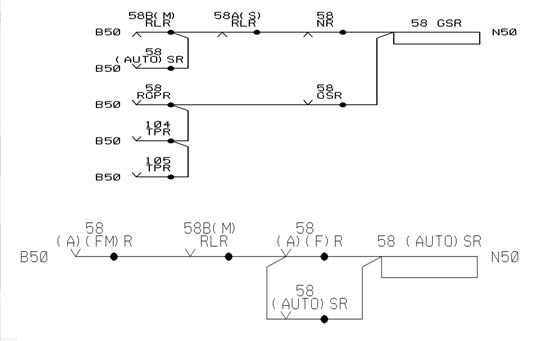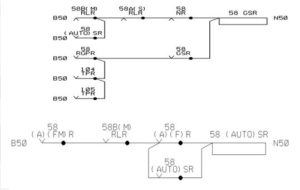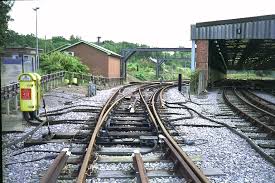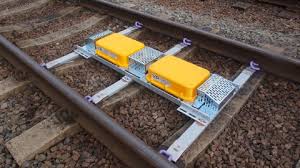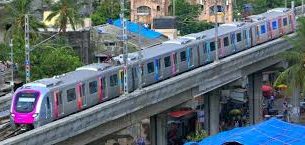Railway Control Table
What is a control table?
A control table is a formal tabulation of the signal, point, and other controls associated with an electrical or electronic signalling system, showing the interlocking and other dependencies between those controls.
- Safety is dependent on the readability of control tables and on their interpretation by competent persons.
- The control table should always be read in conjunction with the scheme plan or signalling plan.
- Their production should use the information depicted on the scheme/signalling plan, together with the associated table of signal routes and aspect sequence chart.
- Other requirements may be obtained from OPS and associated documentation.
- The scheme plan shall be developed from the client remit and OPS or equivalent.
Railway Control Table – Purpose of the control table
1. Control table should fulfill the following purposes
2. Submitting for HMRI statutory approval.
3. Deriving information for signallers, such as signaller’s route cards.
4. Production of engineering details, such as circuit diagram and data.
5. Function and control table testing.
Railway Control Table Conventions
- It is essential that clear and consistent conventions are used for all Control Tables.
- Some of the Standard conventions which should be used within control tables are as follows
“$” References – These are a set of standard notes, which are defined in this Code of Practice. (RT/E/C/11202)
“#” – These should be treated in the same fashion as dollar references but are specific to a particular Control table or set of tables.
Any unusual controls required for a particular function not directly required by the layout of the scheme plan or by signalling standards should be explained on the control table using a # reference.
Quotes “When defining alphanumeric route indicator characters, these should be shown in quotes. e.g.’ M’
Plus “+” This should be used to denote two aspects or indications alight together, e.g. Y+G.
Comma “,” Commas should be used to separate controls where their relationship is “and” e.g. AA, AB
“or” The word “or” should be used to separate controls where their relationship is “one or the other or both”
“N” and “R” To suffix point identifications to indicate their position where this is not stated in the column or box heading. E.g. 718R, 765N.
“Nor” – This abbreviation should follow route numbers to indicate a route and its route locking and approach locking are normal where this is not stated in the column or box heading.
“Occ” – This abbreviation should follow track circuit identifications to indicate that the track in question is occupied where this is not stated in the column or box heading. E.g. “AB occ”
“Set” when following a route identification, should mean that a route is set e.g. [1B(M) after 9A(M)set]. A route will only cease to set when the route is normal.
Control Table Classifications
- CONTROL TABLE FOR SIGNAL/ROUTES
- CONTROL TABLE FOR POINTS AND GROUND FRAMES.
- CONTROL TABLE FOR LEVEL CROSSING
- CONTROL TABLE FOR TPWS
- CONTROL TABLE FOR STAFF PROTECTION SYSTEMS (TOWS)
- CONTROL TABLE FOR BLOCK SYSTEMS & ELECTRO-MECHANICAL.
Railway Control Table For Signal/Routes
- This section relates to route selection and routes releasing
- Route Requires:
Points set or Free
All points serially from the signal
i. Overlap points
ii. Flank points
iii. Soft call points
These should be written in a separate line
Track circuit
- Platform Track Circuit clear (Main) or occ for (Call-on) routes only in case of Call on associated with the main signal.
Route disable control provided
- This box should contain either YES or NO
Route and sectional Route locking normal
- Conflicting Routes in ascending order.
- All Routes starting from the same signal which is not prevented from being set by differing point conditions.
- If the routes are of the same signal, then the order is M, W, C, S
- Routes for pre-set shunt signal within this route which are not prevented from being set by differing point condition.
- All routes from back-to-back signals.
- All directly opposing routes.
- All indirectly opposing routes. (routes which may be initially locked out by points, but become directly opposing as a train transverses the opposing route and releases the sectional route locking behind it)
- Sectional route locking released by Track circuit clear:
These columns should be used to specify the conditions for releasing the controls applied under “Route and sectional Route Locking Normal” when the routes are normal.
Or Occupied …For Time $46
This should show the control required to release the sectional route/overlap locking when the train on the set route has been brought to a stand at the exit signal or other appropriate place, as indicated by track occupation for a specified time period.
Special Controls/Remarks: This should contain any other control required for route selection. like
$2, $3, $4, $17, $21 etc.,
SGRC (Signal Group Replacement Control)
Lockout Normal
Bi-directional Controls
Dead two Reds Rule etc.
SIGNAL CONTROL REQUIRES
This section should define the controls required by the signal aspect. It implies that the route is set.
a) Point Set, Locked, and Detected.
i. Route Points
ii. Overlap Points
iii. Flank points
Supplementary detectors on points shall be shown
Special Controls of the points on signals to be shown
b) Point Set and Detected N or R.
- Overlap swing points
c) Track Circuit clear
- All the track circuits shown in this box are required to clear before the signal can clear. Track circuit should be listed in a logical format, e.g. line of route, overlap, foul, and flank protection track circuits.
d) Track Circuits Occupied
- This should list the track circuits that are required to be occupied. Where required, the minimum time the track must be occupied should also be stated. The temporary approach control track should be listed here. ($7)
e) Signal Alight
- This should show the exit signal, the limit of shunt signal, Banner repeating signal, etc. which is required to be proved alight as required. An entry qualified by $50 indicates that this proving also includes TPWS operating correctly when the signal is on.
f) Track Circuit Occupied for $40 to Inhibit Replacement
Where last wheel replacement has been provided, the first track circuit and berth track circuit should be listed in this column.
g) Aspect Disable Control/Link Provided This should contain either YES or NO according to whether the control/link is provided.
h) Stick control applied when Signal Off and Track Circuit Occupied ($40) This should show the track circuits used to apply the signal stick control. Normally this should be the berth track & first track circuit past the signal.
i) Automatic Working facility provided This should contain either YES or NO.
Signal Stick Circuit
j) Special Controls/Remarks This should contain any other controls required for the signal aspect which is not covered above.
i.Lockout Normal
ii. Preset Shunt Off
iii.TPWS special control
iv.2 Reds Rule
v.Any other aspect level control
Aspect Sequence
- This section shows the aspect displayed by the route entry signal, once the “ SIGNAL CONTROLS REQUIRE” conditions are satisfied.
- Route Indication Alight
The type-and position/character of the route indication to be displayed, which must be proved alight before the signal can display a proceed aspect.
- Aspect to be shown
If the signal displays a position light aspect for this route, PL should be shown in the first line of this box.
All aspects that this signal will display for this route should be shown in this box alongside the aspects which are required to be shown at the next main signal.
- Next Main Signal:
The number of the next main signal should be shown in the space provided. If the aspect to be displayed for this route is a position light, the number should be replaced with a dash.
- Route Set (under Next Main Signal)
This is only used to show flashing yellow. The identification of the route set from the exit signal, which is required to be set, should be listed here.
- Banner aspect (under Next Main Signal)
This should contain the word “OFF”, relating to the aspect of the exit signal’s banner repeating signal (if provided) when the banner is required to be proved in the OFF position
- Track Circuit Occupied:
This should list the track circuits required for approach control from yellow, used for free yellow, or approach control from yellow with flashing yellow aspect in the rear.
Automatic Warning System (AWS)
- Permanent Magnet
This should contain Yes, No, or Suppressed
- Electro-Inductor
This should contain Yes or No
Approach Locking
- Approach Locking applied
If approach locking is provided on clearance of the signal including the cases where the signal is approaching controlled from red this box should contain the words “When Cleared”.
- Where Comprehensive approach locking is provided, this box should contain a list of all track circuits in the rear as for as the sighting points of the signal furthest in the rear, to show the change of aspect if the route entrance signal is replaced to danger.
- Signal ON & Free of Approach Locking
If comprehensive approach locking is provided & if some of the track circuits listed in the previous column can be “conditioned out” when other signals are ON & Free of Approach Locking, the relevant signal numbers should be shown in this column.
- Approach locking released by
Track circuit controls required for the release of approach locking.
(1st TC clear, 2nd TC occ)
after (1st TC occ, 2nd TC occ)
- Special Controls / Remarks
This should contain any special control or notes relating to approach locking controls.
- TORR requires Approach locking free & tracks
This should list any track circuits which are required to be proved clear or occupied in order for the TORR to operate.
(BTC clear, 1ST TC occ)
after (BTC occ, 1ST clear)
If BTC cannot be proved clear then second and third are used.
- TPWS Fitted
This should contain Yes, No, or Special
- TPWS Indicated
This should contain to specify the method of failure reporting of TPWS installations at the signal.
Selection table in railways
What is a route control chart
Signalling control tables
Point control table
Basic concept of railway signalling
